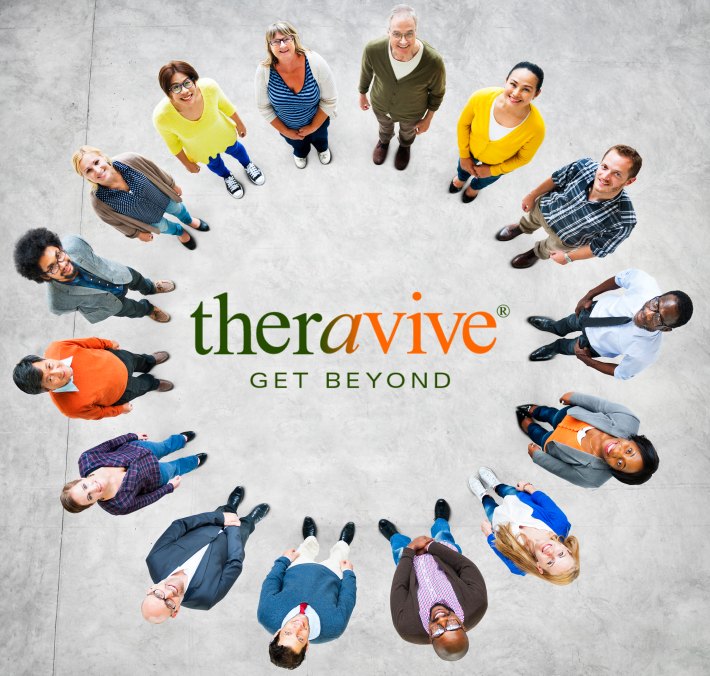Introduction
There are a number of definitions, and a good deal of academic debate about the definition of abnormality, and maybe even more so about the definition of normal. Abnormality is defined in the United States by the DSM-5 (Diagnostic and Statistical Manual of Mental Disorders), currently in its fifth Edition. This is widely considered the definitive guide to abnormality (American Psychiatric Association, 2013). What is normal vs. abnormal exists on a continuum which varies from one culture and historical time period to the next. Abnormality, manifested through mental illness, is typically expressed behaviorally, but of course, also has an affective and cognitive component. For purposes of simplicity and conciseness, I will use the more restricted term, abnormal behavior.
A general criterion for abnormal behavior is as follows:
-
Maladaptation: Behavior which lacks effectiveness, is counterproductive to goal achievement and problem solving, and makes matters worse.
-
Statistical deviance: The majority of a given sample will not indulge in the behavior.
-
Violation of current cultural norms/Cultural acceptability: According to the unwritten, widely accepted rules of the individual’s culture of origin, the behavior is unusual.
-
Observer discomfort: The behavior is considered to be disturbing to others if witnessed- this reflects a violation of cultural norms.
-
Persistent: The behavior is resistant to efforts to change or manage it.
-
Pervasive: The behavior results in adverse effects in multiple areas of life- Educational, Occupational, or social- it infiltrates and makes life unmanageable.
-
Enduring: The behavior continues for a long period of time.
-
Recurrent or cyclical: The behavior will fade, then re-emerge, in predictable cycles, or will occur unpredictably
-
Distressing: The behavior causes the individual significant distress
-
Dangerous to self or others: Through overt acts of harm- e.g., suicidality, or covert neglect – e.g., not feeding self- harm results.
Another way to view abnormality expressed as mental illness is on a behavioral continuum:
Extreme Deficit --------------------------------------------------------------------- Extreme Excess
A given behavior which is extremely deficient and impoverished is abnormal. Depression results in apathy, lethargy, psychomotor retardation, anergia, and amotivation. The manic phase of Bi-polar Disorder results in high energy, racing thoughts, reckless, impulsive behavior, and grandiosity. There is a great deal of room in between for wnl (Within Normal Limits) behaviors which reflect varying degrees of functioning. This is the gray area, where sound clinical judgment is required. Clinicians cannot operate by using the DSM-5 as a checklist. Judgment acquired through education, training, and experience, and considering the context of the behaviors must be considered during the diagnostic process.
Defining Cultural Norms and Roles 
Within a society we have norms; unwritten guidelines, rules, and standards which make our interactions with others more orderly and predictable. We also have roles – a position in society regulated by norms about how that person should act. If we violate these norms and roles, discomfort results. Norms and roles are established by the majority in society and most of us tend to obey and conform to them most of the time.
Conformity vs. Non-Conformity
Conformity has its positive and negative aspects: It allows people to feel connected to one another, and promotes smooth social functioning and cooperation. The downside of conformity is that it can suppress creative thinking, and may encourage us to do things which are self-destructive or harmful to others. People who do not conform to the norms of a particular group are labeled as deviant. The group may try to educate them in the norms of the group, or try to punish them, in order to promote conformity if this does not work, deviants may be removed from the group. An important question is if the degree of conformity or non-conformity fits the criteria for abnormality discussed above. Non-conformity can sometimes be the sanest and healthiest behavior, depending on the context.
Changing Definitions of Abnormality
Some abnormality is classical- that is, it has withstood the test of time. There are certain behaviors which are so aberrant, or harmful, that a society does not tolerate them. There are strong legal and social sanctions in place to prevent them- e.g. - homicide. Other forms of behavior once considered abnormal are no longer deemed so. Changing cultural standards dictate what is normal and abnormal. Children were expected to work at hard labor in factories (University of Iowa labor Center , 2011). Child abuse and domestic violence were private matters which the police and the state kept out of unless it was taking place in public. Homosexuality was a psychiatric diagnosis until 1974, when the DSM II removed it from diagnostic categories, (Koenigsberg, 1981). There was a time in American history that tattooing was restricted to sailors, marines, bikers, and convicts. About 1990, tattooing became more mainstream. Prior to this time, tattoos would be regarded as unusual outside of specific groups. I recall the first time I saw a cell phone- it was huge, with a chrome antennae. A man was talking on it in a supermarket, and everyone he passed stopped and stared at him in disbelief and bemusement. Now, cell phones are so common, it is a rarity- or statistical deviance- for someone not to have one. The definition of normal behavior changes over time, often propelled by emerging technology, trends which are widely adopted, or recognition of an injustice, which people demand legislators change, and social support ensues.
Abnormality in Various Cultures
An exhaustive list of behaviors deemed abnormal by specific cultures is beyond the scope of this paper, and had been addressed by many other sources (See addendum (1). It would be more valuable to address some general areas to promote critical thought in clinicians regarding effective diagnosis and treatment with people from other cultures.
Cultural Relativism: Are All Behaviors Equal?
Cultural relativism proposes that all cultural practices are of equal merit, and should not be judged in the context of another culture. It is important for clinicians to always think critically, and question assumptions. As noted above, there are some behaviors which are just so aberrant, they have not only stood the test of time, but have also been recognized as abnormal across cultures. Multi-culturalism is based on values of respect and tolerance for people that are different from oneself. The purpose is to promote justice, show kindness, and accommodate and meet people where they are, however, when this is taken to extremes, it comes full circle to acceptance of injustice and oppression. This point was made by Anderson (2011) in his observation of his students’ reaction to an Afghan girl who was mutilated by the Taliban. To his shock and distress, students were indifferent to the injustice perpetrated on her, as an acceptable cultural norm. I would challenge the blanket assumption that all cultural practices are of equal value. This can make us accepting and indifferent to the suffering of others, which the very concept of multiculturalism is supposed to ameliorate. The definition of abnormality may be strengthened when a behavior is more universally regarded as abnormal.
Cultural Adaptation: When in Rome, Do as the Romans Do?
Acculturation is the process by which a person of a different culture of origin will gradually adapt the cultural norms of their new or adopted culture. They will conform at least the public aspects of their behavior to the expectations of their new culture. What is normal in the neighborhood they are from may be abnormal in their new home. Examples I have encountered are men from North Africa. Women are generally treated as second class citizens, or the property of their husbands. Domestic violence is a virtually non-existent term in some places, as the concept does not exist. When people from this part of the World come to the United States, there is a certain degree of culture shock at the way women dress, appear in public alone, have legal rights, assert their rights, and are not subject to the whims of their husbands. There may be genuine confusion as to why abusing their wife is a problem. A clinician may have to start where they are at and educate them about the cultural norms here, which are legally supported.
Conclusion
Clinicians will be most effective when they have a broad knowledge base of other cultures, as well as a good operational definition of this term. Gaps in knowledge can be filled by exercising basic counseling skills: listening and non-judgment. Also essential are critical thinking skills; don’t pathologize within normal limits behaviors as defined by norms in other parts of the world. Also see that some behaviors are deviant, regardless of where they occur.
References
American Psychiatric Association. (2013). Diagnostic and Statistical Manual of Mental Disorders. (5th Edition). Washington, DC.
Anderson, S.L. (2011). Is it still wrong if another culture says it is right? A teacher’s surprising discovery. Scribd. Retrieved October 10, 2014, from https://www.scribd.com/doc/74339193/Moments-of-Startling-Clarity
Brandon A Kohrt, B. A., Rasmussen A, Kaiser, B.N., Haroz, E.E., Maharjan M.S., Mutamba, B.B., de Jong, J.T.V.M., and Hinton, D.E. (2014). Cultural concepts of distress and psychiatric disorders: literature review and research recommendations for global mental health epidemiology. International Journal of Epidemiology.43 (2): 365-406. doi: 10.1093/ije/dyt227
Koenigsberg, H. W. (1981). The diagnostic status of homosexuality in DSM-III: a reformulation of the issues. The American Journal of Psychiatry. 138:210-215. Retrieved October 10, 2014 from http://ajp.psychiatryonline.org/article.aspx?articleid=158812.
University of Iowa labor Center (2011). Child Labor in U.S. History. Child Labor Public Education Project. Retrieved October 10, 2014 from https://www.continuetolearn.uiowa.edu/laborctr/child_labor/about/us_history.html
Addendum: Cultural Competence Resources for Clinicians
Lebeauf, I, Smaby, M., and Maddux, C. (2009). Adapting Counseling skills of rMulticultural and Diverse Clients. American Counseling Association. Available: http://www.counseling.org/resources/library/vistas/2009-v-print/Article%204%20LeBeaufSmabyMaddux.pdf
American Psychological Association. (2014). Guidelines on Multicultural Education, Training, Research, Practice, and Organizational Change for Psychologists- American Psychological Association. American Psychological Association. Available: http://www.apa.org/pi/oema/resources/policy/multicultural-guidelines.aspx
Fast, J. ( 2002). Body Language. (2). M. Evans & Co: NY
The State of Queensland . (2014). Multicultural Clinical Support Resource. Queensland Government. Available: http://www.health.qld.gov.au/multicultural/support_tools/mcsr.asp
About the Author
